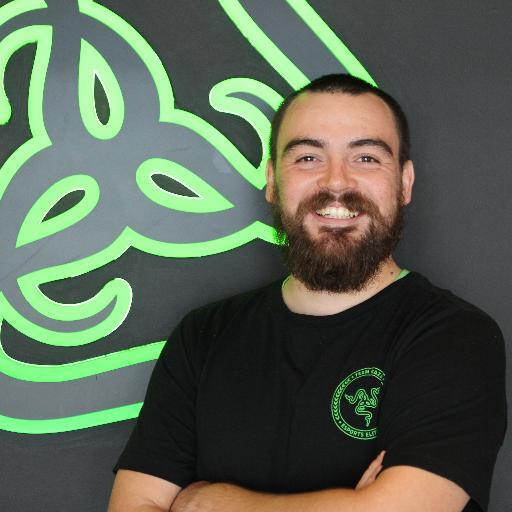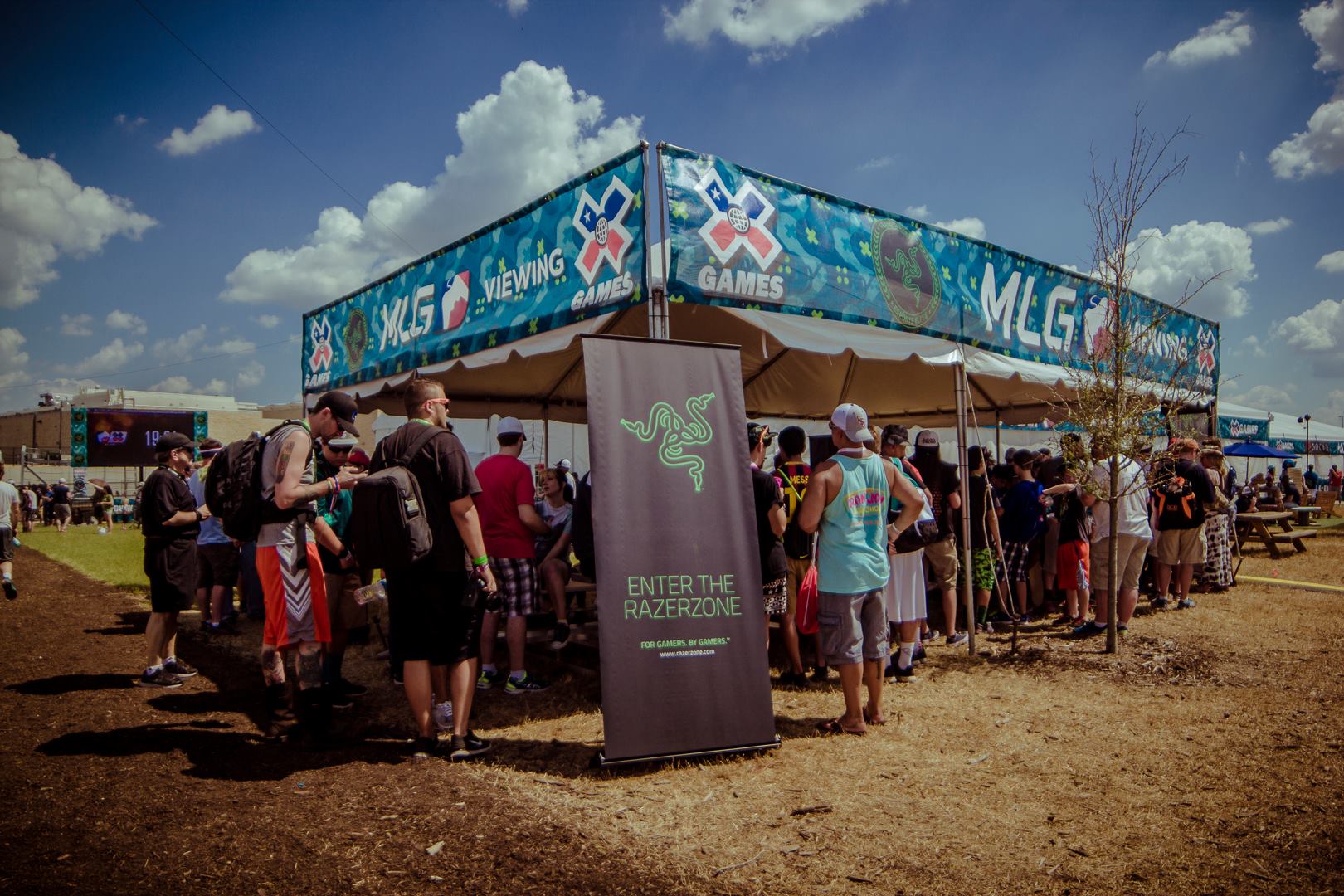At the recent X-Games Austin, which was the third X-Games to feature video game competition with Major League Gaming, Razer used the event and the extreme sports fans it attracts to market its line of PC gaming gear. Razer gave away Nabu X wearables to attendees.
Razer-sponsored Call of Duty team eLevate earned a bronze X-Games medal at the event. Razer also sponsored pro skater Tom Schaar, the first skateboarder to pull off a 1080 in a halfpipe. He earned bronze medals in the X Games Skateboard Big Air and Big Air Doubles events. Razer released a “Life is just a game” video featuring Schaar via social media.
Razer was the first company to sponsor a professional gamer in 2000 when it sponsored Jonathan “Fatality” Wendel with the Razer Boomslang, the world’s first gaming mouse that helped shape the 10-figure gaming peripheral industry. Today, Razer sponsors 27 teams and 270 competitive players in 33 countries worldwide.
X-Games Austin 2015 was also noteworthy because of ESPN2 airing the Dota 2 finals on TV. Call of Duty competition was seen digitally on ESPN3. Drew Holt-Kentwell, associate manager of global eSports at Razer, explains what X-Games and ESPN have opened up for Razer and all of eSports in this exclusive interview.
What’s your background in eSports?
I started as a competitive Battlefield and Counter-Strike: Source player 10 years ago and was heavily involved in the ecosystem at large of the former — I captained the UK national side and went on to create my own team before running the ESL Nations Cup and becoming a part-time journalist for then Cadred.org {link no longer active}; during the same time I was also volunteering as an ESL admin. I moved on to join Reason Gaming, a UK-based team where I was brought on as Director of Marketing where I was handling sponsorships, social media, and business development. After that I joined Razer in July 2011, and that’s where I am today happily heading up our global eSports team.
Why did you decide to join Razer?
It was an easy choice for me because Razer sponsored Reason Gaming at the time and I was already working closely with employees at Razer for sponsorship engagement. I knew Razer had been one of the early pioneers of eSports, and given Razer’s history in eSports and some of the plans it had for Team Razer, it was a challenge I knew I’d wake up looking forward to conquering every single day of the year. No regrets, and still as devoted and passionate as ever.
What’s the perception of Razer among eSports fans?
ESports fans have seen Razer involved in the industry for nearly as long as eSports itself has been around, and I think like us they’re just happy to see long-term to supporting and growing the industry on as many levels as possible. Fans are aware that we have and always will continue to work with the world’s best teams, players and events and we hope that fans can put their faith in us to inspire and pioneer eSports for a very long time to come.
Today we sponsor teams and events in nearly every major competitive title out there — some 300 professional eSports athletes from all over the world. These professionals have a direct impact on the lives of fans, and we hope that through the work we do with them that fans can also be inspired to get out there and help nurture the industry in the right ways.
How have you seen Razer products used by pros over the years?
It has been an incredible journey to see how Razer products have been shaped by feedback from our professional athletes, and in turn how some of their habits have changed over the years too, since the days of the Boomslang. In 2007 we built the Razer office in Korea solely for the purpose of testing with our professional teams and players that were based out there at the time — the feedback we received helped us build more accurate tools for them to dominate their trade, and in turn we could help the casual gamer or semi-competitive individuals improve their game too.
Today, our eSports athletes are integral to the testing of all of our products and initiatives, not just gaming peripherals. With the launch of the Razer Blade, Nabu X, Team Razer apparel, and software, pros are now part of a much bigger digital revolution, and we’re excited to have them with us every step of the way.
What do you hope to bring to Razer’s eSports focus?
We want to continue to be pioneers for the eSports industry at large as we’ve done since 2000 and really lead the way on crafting the next crucial steps for eSports as a whole. We want to ensure that eSports is sending the right message to the general public around the world and attracting the right sorts of investors, teams, players and fans. Today the industry is growing at such a rapid rate that it’s even more important than ever before that we see professionalization among teams and managers especially, so we’d like to encourage proper legal practice, but also to encourage the right marketing and business practices among teams so that they can learn to develop and grow in the right ways themselves (and inspire others to do the same).
Above all we just want people to enjoy the passion, entertainment and friendships that eSports brings to millions around the world, and we hope that it continues to inspire many millions more for many years ahead. We’ll be there doing everything we can to make sure that happens.
How have you seen MLG’s involvement in the X-Games evolve since last summer?
When MLG first announced its involvement in the 2014 X Games, I remember being a bit skeptical. I couldn’t imagine that MLG’s tournament was actually going to be integrated in to the extreme sports event. However, players were treated as athletes by the ESPN staff including the receipt of medals, the tournament received off-hours television broadcast time, and MLG’s event was a listed activity on any and all X Games program materials. In 2015, all of these elements of integration were taken a step further with ESPN taking a very hands on approach in building the “Gaming Shack”, an area of the X Games campus dedicated to gaming. This year’s X Games included two separate MLG tournaments, live event interaction between the professional gamers and extreme sports athletes, live television air time, and PA announcements updating the entire X Games venue of what was going on with the MLG tournaments. In both years, major strides were made for eSports as whole and we’re honored to have played a part in the latest iteration of the X Games. Â
How do you utilize social media to connect with the larger Dota 2 and Call of Duty fan base?
Social media is an incredible tool through which we can reach like-minded eSports fans. On a small scale we try to bring daily content to fans about the teams and players we work with, the events we visit, and some of the people we meet while working in the industry. It’s also a great opportunity to give people a spotlight into the lives of professionals — their daily routines, the places they live and train, what their parents are like, and how they deal with the pressure of the professional gaming lifestyle.
On a much bigger level we use social media to help our teams connect to the rest of the eSports audience at large. It’s a platform which they can use to grow and develop their own brands, and we’re always encouraging teams to make use of this. We try to run widespread campaigns with most teams through the year which allow fans to jump in and get involved, whether through competitions and giveaways to visit pros at events, or to win some of the actual gear the professionals use for themselves.
ESPN2 aired Heroes of the Dorm earlier this year and Dota 2 at X-Games. What role do you see traditional broadcast playing for eSports in the U.S. moving forward?
Traditional broadcast has a part to play in showing the mainstream audience what eSports is and how it’s changing today’s younger generations for the better. 205 million people watch eSports around the world, and it’s generating thousands of jobs — at developers and publishers, tournaments, professional organizations, and tech companies like Razer. Today, eSports is a $612 million market with plenty of opportunities — traditional broadcast can help bring these opportunities to the mainstream and help inspire eSports around the world.
As far as broadcasting events, it’s fantastic to see companies like ESPN step up and invest in the production of eSports. There’s a lot we can learn from traditional companies, on a technical and strategic level, about how to better broadcast competitive gaming.
What are your thoughts on the recent rise of Fantasy eSports and eSports betting sites and how this could help the growth of eSports?
Seeing the whole ecosystem grow is fantastic, and I think the introduction of fantasy eSports and betting sites encourage people to support the games they like to play and watch on a deeper level — people will be able to follow their favorite teams like never before, and it allows them to focus on teams they may not previously have been interested in as well. It adds an element of excitement and makes it more exciting to follow. It’s a great way to generate exposure for eSports at large.
Are there issues that gambling can open up at the player level once this business takes off and the money grows?
That’s always a concern in any sport, but we expect that if companies, tournament organizers and teams work together to implement the correct regulations that any wrongdoing will be minimized. At the end of the day players want to be the best they can, and their passion is competing on the world stage — we don’t think eSports fantasy or betting sites will change that basic instinct.


